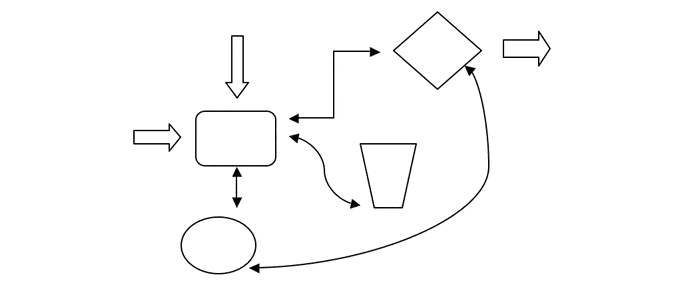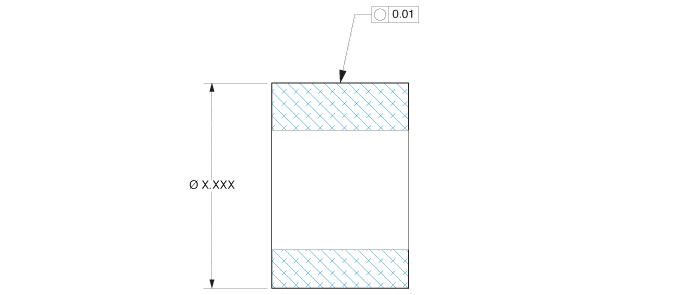
CIRCULARITY (CIR – CU – LER · I · TEE)
DEFINITION: A CONDITION WHERE ALL POINTS OF A SURFACE OF REVOLUTION, AT ANY SECTION PERPENDICULAR TO A COMMON AXIS, ARE EQUIDISTANT FROM THAT AXIS. THE CIRCULARITY CONTROL IS A GEOMETRIC TOLERANCE THAT SPECIFIES THAT EACH CIRCULAR ELEMENT MUST LIE WITHIN A TOLERANCE ZONE OF TWO COAXIAL CIRCLES.
Circularity, also known more commonly as “roundness” is a form control that is applied to any part feature with a diametrical (round) cross section.
With the context of “circularity” confined to round parts, we are left to ask ourselves a series of questions as to where such roundness error stems from, and where workholding participates in such.
- Do the parts experience a specific roundness shape that of a “tri-lobing”?
- How could the actual process be affecting the results?
- How should thin walled parts be processed?
- Is the gripping diameter itself not round?
- Is tool pressure adding to the problem?
- Is the chuck cylinder pressure already as low as possible?
- Could an increase in surface contact with the part in fact distribute the gripping force better?
- What impact does reducing the grip force have?
- What relationship is there between surface finish, tool chatter and workholding ?
- How might increased friction benefit roundness performance?
HOW DO ALL OF THESE FACTORS INTER-RELATE IN ORDER TO IMPROVE ROUNDNESS RESULTS?

With so many possible scenarios and applications, we might just review one concept here. The inter-connection between; thin walled parts, tri-lobing (ie. shape of the deformation) and hydraulic cylinder size.
It is a common observation that a tri-lobed part is the effect of excessively high grip force (for the given application) of a 3-jaw chuck. Assuming the part is still safely held, we might conclude the chuck is to blame, but is it? Does our cause and effect analysis take us far enough?
We might review the source of the grip force to determine what “causes” the grip force value to be.
Yes, it is actually the hydraulic cylinder actuating the chuck that ultimately determines the grip force of the chuck. In fact we have a new situation; Cause-Effect-Cause. Knowing this, can we further reduce the cylinder pressure to minimize the grip force.
HYDRAULIC PRESSURE > CHUCK GRIP FORCE > CIRCULARITY ERROR (DEFORMATION)
If through this continued pressure reducing effort you find the pressure at its lowest setting, yet the negative effects of deformation continue to produce unacceptable circularity results, are there any other options?
Yes, and there are quite a few.
- Review of cylinder size
- Increasing the number of jaws
- Increased jaw friction and reduction of grip force
- Gripping diameter not being round must be addressed
But we also come to a point where the uniqueness of the application and expectations of the customer uniquely drives the direction of appropriateness.
If you have attempted various approaches to improving the circularity (i.e., roundness) of your own
parts and wish to accelerate the rate of improvement, contact us to review the specific details of your
application. Depending on what is currently unknown about the actual root cause, we might recommend
a scoping program that includes a root cause analysis, written report and action plan.

